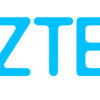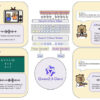Security experts at BAE Systems say they have discovered the malware that was used to help an unknown attacker gain access to the Bangladesh Bank’s (BB) SWIFT payment system and reportedly instructed an American bank to transfer money from BB’s account to accounts in the Philippines. The attackers attempted to steal $951m, of which $81m is still unaccounted for.
“The technical details of the attack have yet to be made public, however we’ve recently identified tools uploaded to online malware repositories that we believe are linked to the heist. The custom malware was submitted by a user in Bangladesh, and contains sophisticated functionality for interacting with local SWIFT Alliance Access software running in the victim infrastructure,” wrote Sergei Shevchenko, BAE Systems’ security researcher, in a blog post on the company’s website.
According to Shevchenko, the malware appears to be just part of a wider attack toolkit, and would have been used to cover the attackers’ tracks as they sent forged payment instructions to make the transfers. This would have hampered the detection and response to the attack, giving more time for the subsequent money laundering to take place.
“The tools are highly configurable and given the correct access could feasibly be used for similar attacks in the future,” said Shevchenko. “We believe all files were created by the same actor(s), but the main focus of the report will be on 525a8e3ae4e3df8c9c61f2a49e38541d196e9228 as this is the component that contains logic for interacting with the SWIFT software.”
Shevchenko explains that the malware registers itself as a service and operates within an environment running SWIFT’s Alliance software suite, powered by an Oracle Database.
The malware can extract fields such as transfer references and SWIFT addresses to interact with the system database. These details are then used to delete specific transactions, or update transaction amounts appearing in balance reporting messages based on the amount of Convertible Currency available in specific accounts.
“This functionality runs in a loop until 6am on 6th February 2016. This is significant given the transfers are believed to have occurred in the two days prior to this date. The tool was custom made for this job, and shows a significant level of knowledge of SWIFT Alliance Access software as well as good malware coding skills,” wrote Shevchenko.
Shevchenko warns that the general tools, techniques and procedures used in the attack may allow the gang to strike again.
“All financial institutions who run SWIFT Alliance Access and similar systems should be seriously reviewing their security now to make sure they too are not exposed.
“The wider lesson learned here may be that criminals are conducting more and more sophisticated attacks against victim organisations, particularly in the area of network intrusions (which has traditionally been the domain of the ‘APT’ actor). As the threat evolves, businesses and other network owners need to ensure they are prepared to keep up with the evolving challenge of securing critical systems.”













































































































